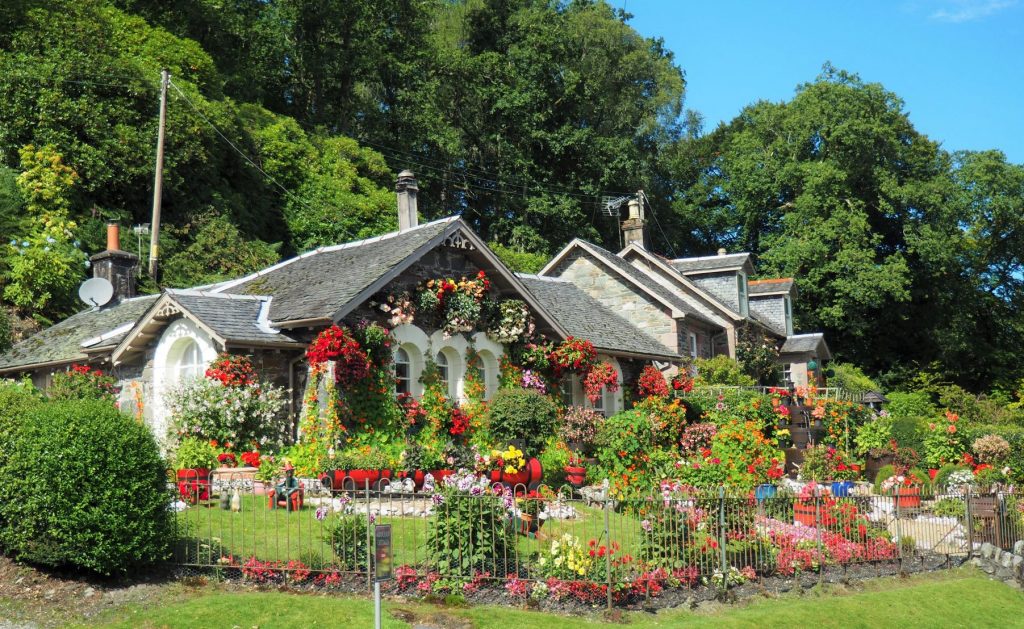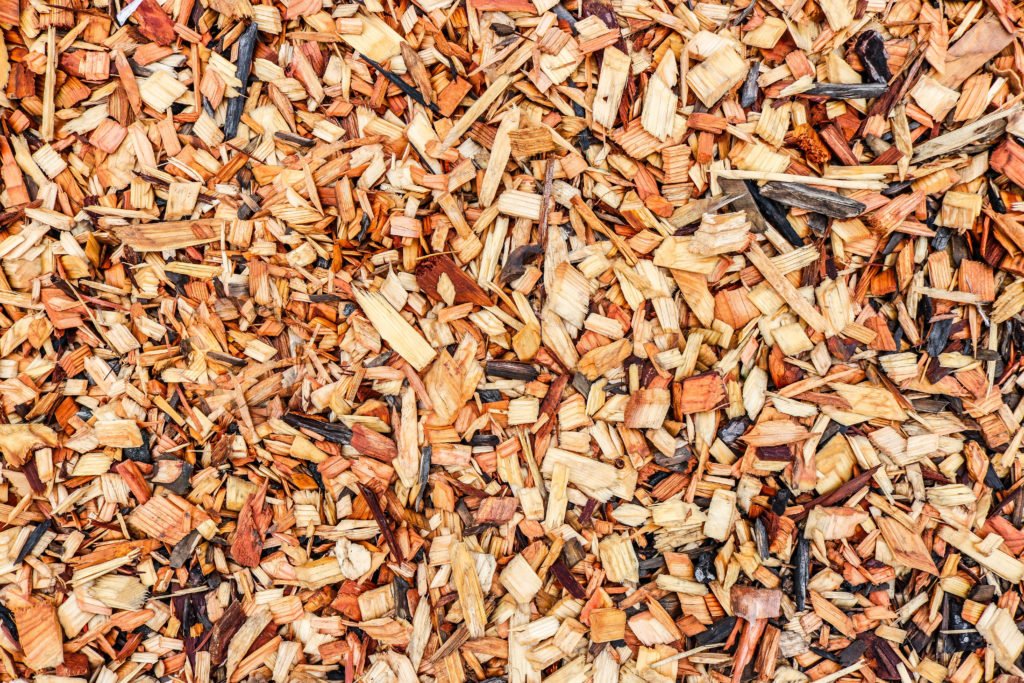Did you know that solitary bees play a very important role in our ecosystem? These little creatures help pollinate flowers and crops, and they are essential to the health of our planet. Unfortunately, solitary bees are facing some serious challenges these days, including habitat loss and climate change. But there is something we can all do to help these beautiful creatures! In this article, we will discuss solitary bees and their importance, as well as ways we can all help them thrive.
What are solitary bees?
Solitary bees are a type of bee that lives alone, rather than in hives like honeybees. Solitary bees play a vital role in our food system, as they help to pollinate crops such as fruits, vegetables, and nuts. Solitary bees are also key to the health of our natural ecosystems. By pollinating flowers and other plants, solitary bees help to ensure that these plants can continue to thrive and provide food and shelter for other animals.
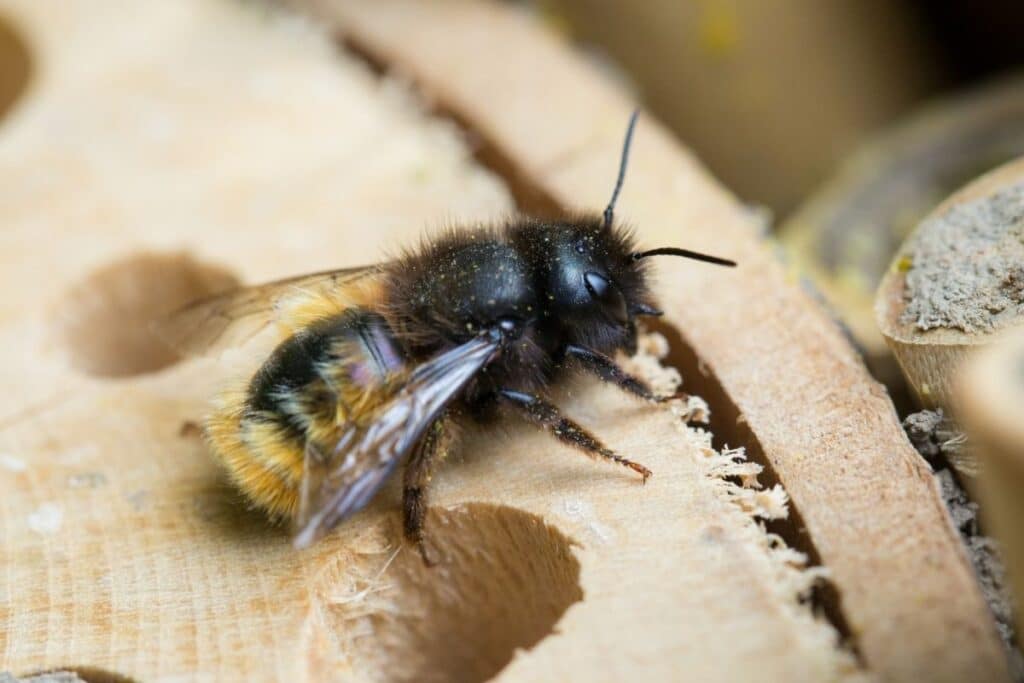
There are over 20,000 different species of solitary bees in the world, with about 3,500 species native to North America. Here in California, we host over 1,500 species alone! Some examples of solitary bees are carpenter bees, mason bees, and leafcutter bees.
Solitary bees are important pollinators
Solitary bees are some of the most effective pollinators on the planet. In fact, solitary bees are actually better at pollinating than honeybees! Solitary bees are so efficient at pollinating crops that they have occasionally overwhelmed commercial farmers with their high production. This is because solitary bees spend more time visiting flowers, and they have special adaptations that allow them to gather pollen more efficiently.
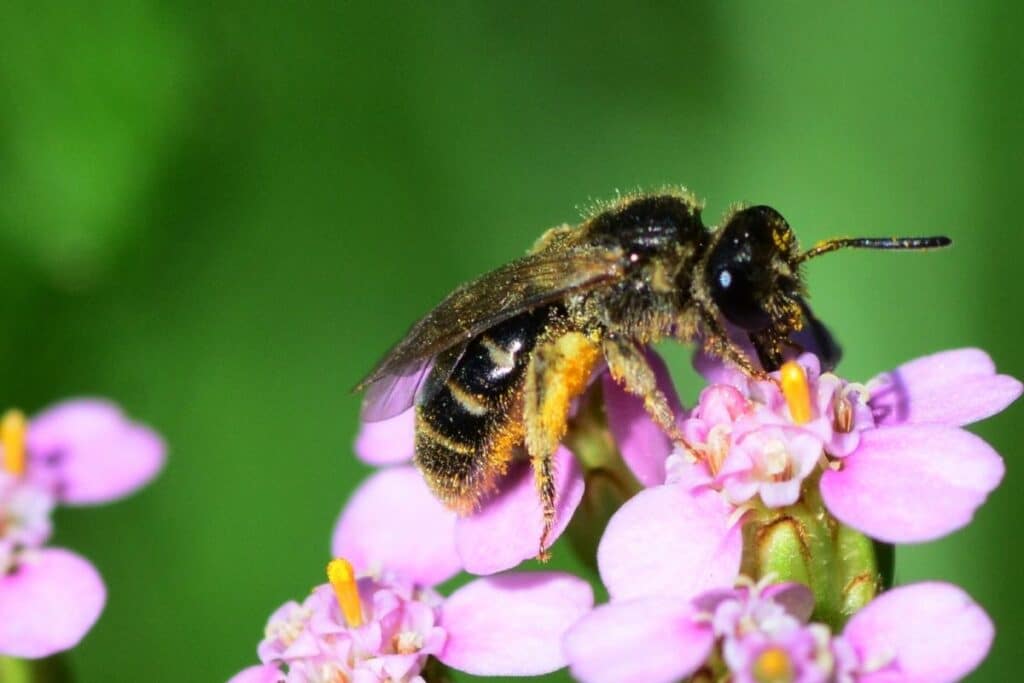
Unfortunately, solitary bees are facing many challenges
Despite their importance, solitary bees are facing some serious challenges. One of the biggest threats to solitary bees is habitat loss. Additionally, climate change is making it harder for solitary bees to find food and survive the winter months.
Where do solitary bees live?
Solitary bees typically build their nests in small holes or crevices. This could be in a dead tree, a piece of wood, or even a hollow reed. Sadly, solitary bees are losing their natural habitat at an alarming rate. As humans continue to develop and build homes, solitary bees are left with fewer and fewer places to nest and forage.
This loss of habitat is one of the biggest threats to solitary bee populations around the world along with pesticide use. This is why it’s so important that we do what we can to help solitary bees!
How can you help solitary bees?
One of the best ways to help solitary bees is by providing them with a safe place to nest. You can do this by creating a solitary bee house! Bee houses provide solitary bees with a place to lay their eggs and raise their young. By placing a bee house in your garden you provide these bees with a safe place to nest and in turn, they will help pollinate your garden. Some of these bees will even help protect your garden from pests like tomato hornworms.
What is a solitary bee house?
A bee house is a structure that provides solitary bees with nesting cavities. Bee houses can be made from a variety of materials, such as wood, bamboo, or even recycled plastic containers. The size and shape of the nesting cavities will vary depending on the species of solitary bee you are trying to attract. For example, mason bees nest in cylindrical tubes, while carpenter bees prefer square or rectangular boxes.
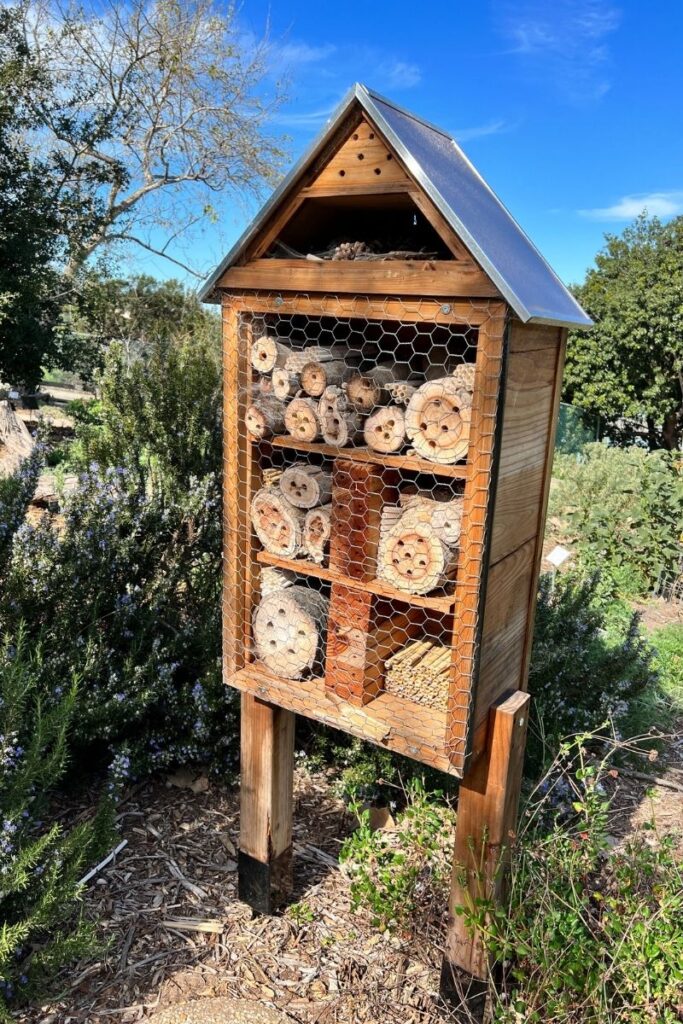
What should bee houses be made of?
As great as upcycling old furniture is, please avoid the urge to turn old furniture like popular dresser drawers into a home for bees as these items are commonly treated with chemicals, stains, paints, and coating that help retain the fresh look longer. These chemicals can harm the bees as it rots and disintegrates from being exposed to the elements. Also, pesticides are often used on these products to deter termites and other wood-eating insects that would damage quality wooden furniture.
And while you can find a lot of cute bee houses and kits in stores and online, the best thing you can do when making a bee house is to gather your own trusted materials. Because unfortunately, even many wood products like construction lumber are treated with chemicals that are harmful to bees and can lead to killing the bees that you are trying to provide a home for.
Instead try to use reeds, bamboo, and fresh wood you cut yourself when clearing your property to make a natural bee house that will not put the bees at risk. If you need to purchase wood or other materials to make your own DIY Bee House, be sure it is untreated.
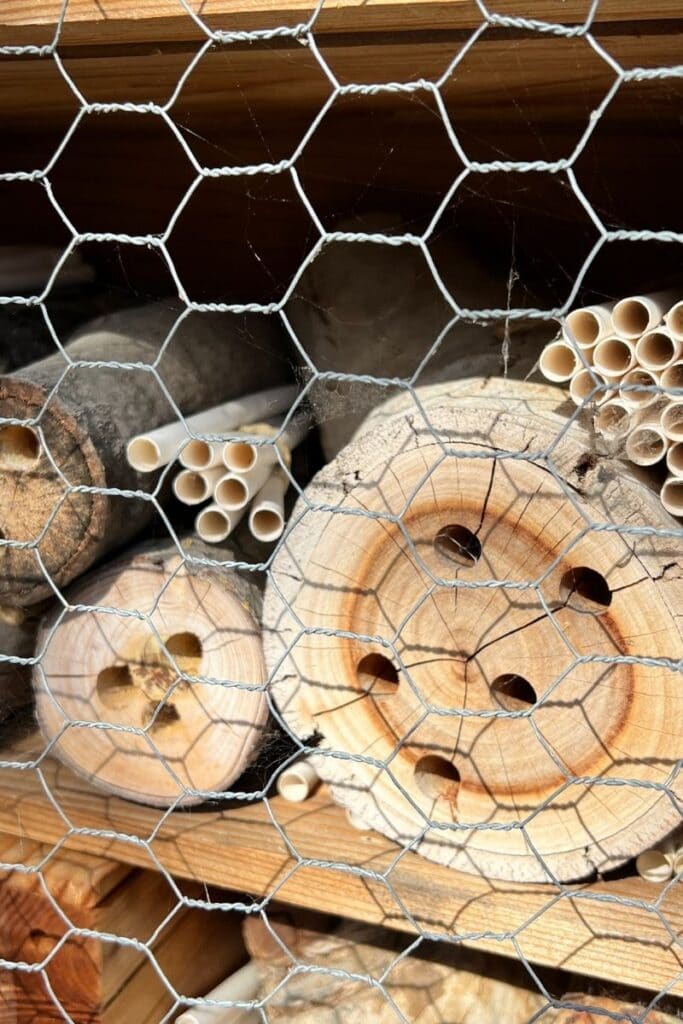
When choosing material for your bee house, it’s also important to consider the size of the holes. They need to be wide and deep enough for the bees to climb inside and receive shelter from the wind and elements. Solitary bees will nest in holes that are about the size of a pencil eraser. If the holes are too small, the bees won’t be able to get inside. If the holes are too big, however, wasps and other predators could move in and eat the bees!
You also want to make sure the bee house has good ventilation and drainage. It’s important to drill or poke holes in the bottom of each nesting cavity to allow water to drain out. If water is left sitting in the bee house it can lead to mold and mildew, which can kill the bees.
Other ways to help solitary bees
In addition to providing solitary bees with a place to nest, there are other things you can do to help these important pollinators. One way is to plant native flowers and trees in your garden. By planting native plants, you will not only attract solitary bees to your garden, but you will also provide them with the food they need to survive.
Another way to help solitary bees is to avoid using pesticides in your garden. These harsh chemicals are great for getting rid of insects we do not want but in the process, they kill off the pollinators we do want. Instead, why not attract beneficial insects to help out with garden pests like aphid and whitefly? For instance, I release ladybug and praying mantis in my garden each spring. If you must use pesticides, be sure to only use them when necessary and always follow the label instructions.
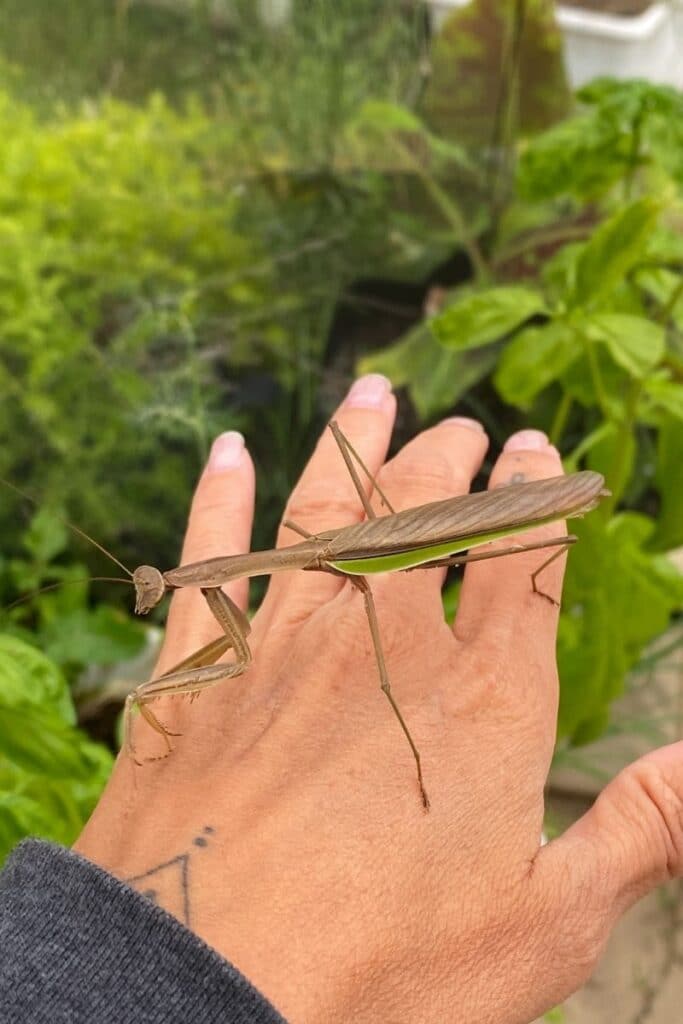
Do not use weed preventative on your lawn. Dandelions, clover, and other blooms that pop up in your yard are a vital and often a favorite food source for bees. Most of these tend to be prevalent when other flowers are lacking making them even more important.
Place fresh fruit out in your yard to help feed bees when blooms are scarce. This can help them in the early spring and late fall when food is not as plentiful. Solitary bees do not have the same storage of food bees with nests do, leaving them in need of the extra help keeping fed longer in the season.
You can also help solitary bees by leaving some areas of your garden undisturbed. This provides solitary bees with a place to build their nests and raises their young. So, next time you’re tempted to tidy up your garden, remember that solitary bees need some mess!
So, what are you waiting for? Get out there and start helping solitary bees! These fascinating creatures play a vital role in our ecosystem and need our help to survive. Together we can make a difference for solitary bees and other pollinators. Thanks for reading!
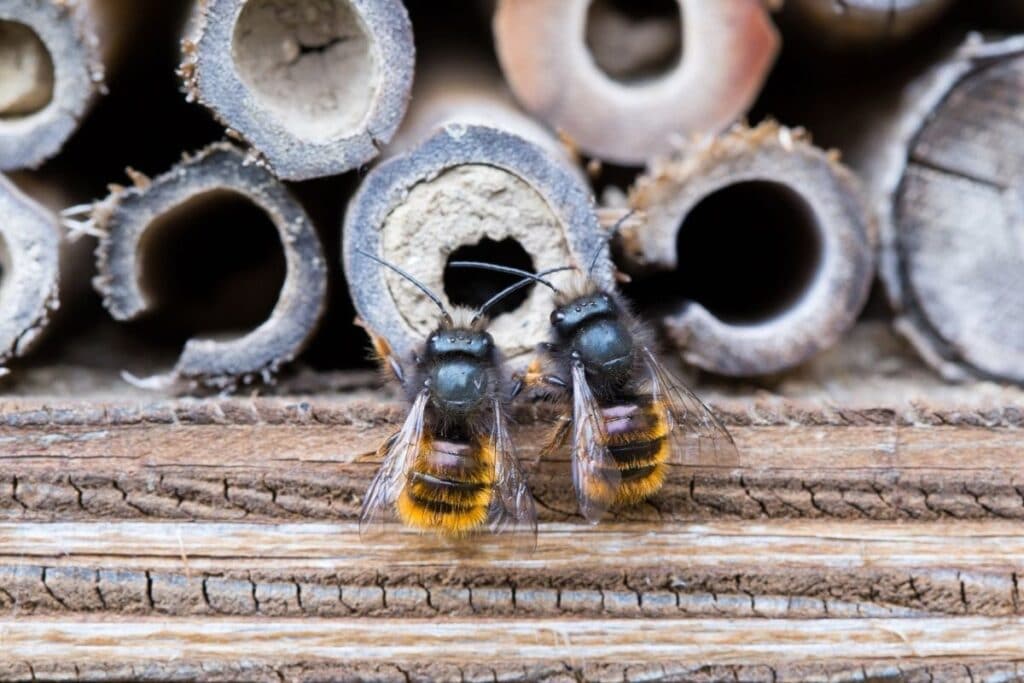
Do you have a bee house? Have you taken any other steps to help solitary bees? Let us know in the comments below!
If you’re looking for more ways to help solitary bees, consider joining a local beekeepers group or organization. There are many groups around the country that are dedicated to helping solitary bees and other pollinators. Joining one of these groups is a great way to learn more about these amazing creatures and how you can help them.

